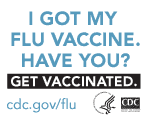Rabies Exposure
What You Need to Know
![]() Types of Exposure
Types of Exposure
Rabies is a medical urgency not an emergency, but decisions must not be delayed. Any wounds should be immediately washed and medical attention from a health care professional should be sought for any trauma due to an animal attack before considering the need for rabies vaccination.
![]() Rabies Post-Exposure
Rabies Post-Exposure
Regardless of the risk of rabies, anyone who treats bite wounds must recognize and treat serious injury (e.g., nerve or tendon laceration), avoid infection (both local and systemic), and strive for the best possible cosmetic results. For many types of bite wounds, immediate gentle irrigation with water or a dilute water povidone-iodine solution has been shown to markedly decrease the risk of bacterial infection.
![]() Rabies Pre-Exposure
Rabies Pre-Exposure
Although preexposure vaccination does not eliminate the need for additional therapy after a rabies exposure, it simplifies management by eliminating the need for RIG and decreasing the number of doses of vaccine needed -- a point of particular importance for persons at high risk for being exposed to rabies in areas where immunizing products might not be available or where lesser quality biologics might be used placing the exposed person at increased risk for adverse events.
Additional Information
Content Source: National Center for Zoonotic, Vector-Borne, & Enteric Diseases (ZVED)

